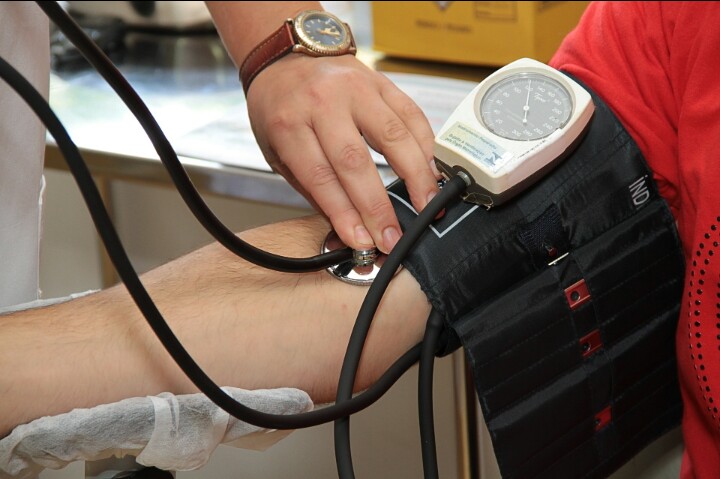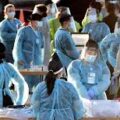Public health Practice Definition
Public health practice can be defined as the strategic application of public health skills and expertise in the delivery of public health services and other activities geared towards improving and promoting the health of the population. Public health practice is understood broadly as the collection and analysis of identifiable health data by a public health authority for the purpose of protecting the health of a particular community, where the benefits and risks are primarily designed to accrue to the participating community.
For many public health practice activities, data are systematically collected and analyzed. Scientific methods are used in both public health research as well as public health practice activities. Knowledge is generated in both cases. Furthermore, the extent to which knowledge is generalizable might not differ greatly in research and nonresearch. Thus, nonresearch and research activities cannot be easily defined by the methods they employ. Three public health activities – surveillance, emergency response, and evaluation – are particularly susceptible to the quandary over whether the activity is research or non-research.
The major difference between research and nonresearch lies in the purpose of the activity. The purpose of research is to generate or contribute to generalizable knowledge. The purpose of nonresearch in public health is to prevent or control disease or injury and improve health, or to improve a public health program or service. Knowledge might be gained in any public health endeavor designed to prevent disease or injury or to improve a program or service. In some cases, that knowledge might be generalizable, but the purpose of the endeavor is to benefit clients participating in a public health program or a population by controlling a health problem in the population from which the information is gathered.
To help discern whether your particular project will need IRB review, consider the following criteria which tend to represent one or the other. Please note, this list is to be used as a guide and is not a definitive determination:
| Common Elements | |
| Public Health Practice | Research |
| Involves direct performance or oversight by a governmental public health authority (or its authorized partner) and has public accountability | Often conducted by academic centers and institutions which have experience conducting research |
| The primary intent is to prevent or control a disease or injury | The main aims are to research and draw conclusions about a hypothesis in order to contribute to the field at large |
| Focused on improving the health of a specific population or group | Focused on generating knowledge that can be disseminated and applied broadly |
| Benefits and risks are primarily designed to accrue to the participating community | Benefits are intended to apply beyond the participating community who bear the risks |
| May legitimately involve persons who did not specifically volunteer to participate (i.e. no informed consent) | Involves research subjects who voluntarily consent to participate (or else a specific waiver of such) |
CONCEPTS & THEORIES IN PUBLIC HEALTH PRACTICE
- APEXPH
APEXPH is a voluntary process for organizational and community self-assessment, planned improvements, and continuing evaluation and re-assessment. It is not positioned as a protocol for the evaluation of a local health department by an outside reviewer, such as a state or federal department. It is most valuable when it is adapted to local circumstances and needs and when it is integrated into the ongoing operations of the health department.
This provides a tool for communities to Improve teamwork and strategic planning when self-assessing intervention, especially public health programs.
- MAPP
Mobilizing for Action through Planning and Partnerships (MAPP) is a community-driven strategic planning process for improving community health. It helps communities prioritize public health issues by the adoption of strategic thinking to identify resources needed to address them. At a personal level, MAPP will enhance strategic thinking and at the community level, it is useful in prioritizing issues within communities and identifying needed resources to address them
- Scoping
Scoping is a process that has two components namely the identification of all the dimensions of public health issues and the determination of which dimensions are central to the issue at hand and which are peripheral. Scoping is critical because it is important to have a comprehensive understanding of a problem in order to see and appreciate the insights that are integral to its solutions. The aim of scoping is to broaden the view of the problem, move beyond individual perspectives and help to see the problem from others’ eyes. Without understanding a problem, providing solutions will be difficult. Scoping provides the platform to tap from the knowledge base of the community as it incorporates the knowledge and understanding of others.
- Disaster Management Cycle
The Disaster management cycle depicts an ongoing system by which businesses, civil society, and governments plan for and reduce the impact of disasters. It outlines how to react immediately, during, and after a disaster. If applied community-wise, it will help reduce losses that will arise in the event of a disaster or a sad occurrence within the community and provide a pathway for recovery after the incident.
- Hazard Analysis
Hazard analysis is defined as the process of recognizing dangers that may arise from within a system or the areas that constitute its environment and documenting their undesired consequences and analyzing their potential causes. A proper analysis of hazards at a personal level will greatly reduce the threat to life as it will clearly depict the vulnerable areas and provide avenues for risk reduction and mitigation.
- Incident Command System
Incident command system is a hierarchical structure that commands, controls, and coordinates an effective emergency response among all the agencies and organizations in a disaster. It is designed to organize people and resources and to allocate necessary services to the population in need. When properly implemented in communities, it will help first responders within the community adopt an integrated organizational structure that matches the complexity and demands of any single incident or multiple incidents without encumbrances emanating from jurisdictional boundaries. SEE: Public Health Surveillance: Steps, Types, Importance
- Triage
This is the process of systematically sorting out people on the basis of their need for urgent medical attention. Triage is usually implemented during disasters, wars, and in emergency rooms. This is very critical as it will reduce mortality rates and help health officials act in a manner that ensures high survival rates among victims.
8. Integrated Management of Childhood Illness
Integrated Management of Childhood Illness of (IMCI) is an approach to child health developed by the United Nations Children’s Fund and the World Health Organization in 1992 with the aim of reducing disability, illness, and death. The approach also focuses on improving growth and development in children under the age of 5. This is critical especially in rural communities and developing countries where nutrition remains a challenge. Child mortality due to malaria and other childhood diseases will be greatly reduced when this approach is adequately implemented.
- Drug dependence
Drug dependence is the compulsive urge to take drugs in order to experience its psychic effects, and sometimes to avoid the discomfort of its absence. Drug dependence has been on a steady rise, understanding the dynamics that lead to dependence is critical to any resolve to help fight the menace.
10 Cultural competence in healthcare Model
This a concept developed by the theorist Dr. Campinha-Bacote that demonstrates cultural competence toward patients with diverse values, beliefs, and behaviors. The process includes consideration of the individual’s social, cultural, and linguistic needs of patients for effective cross-cultural communication with their health care providers. This concept when applied can open a plethora of perspectives that helps a physician or health personnel to better understand an individual. This will lead to enhanced healthcare delivery, and prevent misunderstanding among staff, residents/patients, and families.
Broader Application of the Concepts of Public Health Practice
- With a clear understanding of public health practices and principles concepts like APEXPH, self-assessment without outside intervention or help will be made easier using the framework.
- The concept of MAPP if well implemented will enhance the application of strategic thinking to prioritize public health issues and identify resources to address them.
- Scoping is strategic if the outcome or solution will be effective in solving the problem. Applying this concept will enable a team to comprehensively understand a problem in order to see and appreciate the insights that are integral to its solutions.
- An improved understanding of the disaster management circle will improve effectiveness and efficiency in health care delivery during disasters, emergencies, and epidemic conditions where health personnel are often faced with limited resources against a population that is in dire need.
- Hazard analysis if properly implemented will help mitigate losses and prevent loss of lives.
- Incident command system when adopted will enable public health personnel to able to organize people and resources and to allocate necessary services to the population in need. It will also allow responders to adopt an integrated organizational structure equal to the complexity and demands of any single incident or multiple incidents without the encumbrances of jurisdictional boundaries.
- The systematic implementation of triage will ensure that the individuals who need health assistance the most are not denied the opportunity to live.
- The Integrated Management of Childhood Illness provides a major opportunity for improving child care and managing childhood diseases so as to reduce childhood diseases and mortality.
- Understanding how drug dependence starts and the factors that enhance it is critical to any drive to reduce the level of drug use and abuse.
- Adopting the concept of cultural competence will enable public health personnel to better understand a patient’s social, cultural, and linguistic needs and improve cross-cultural communication which in turn will help eliminate misunderstanding.
learning from public health practice examples of best practices is the fastest and most efficient means of learning how to effectively manage any public health crisis or situation.SEE: Equity Vs Equality: Understanding The Difference
Public Health Nigeria an Interdisciplinary public health movement focused on health education, advancing fair public health policies, promoting fitness, healthy diets, responsible behavior, community health and general well-being.






1 Comment